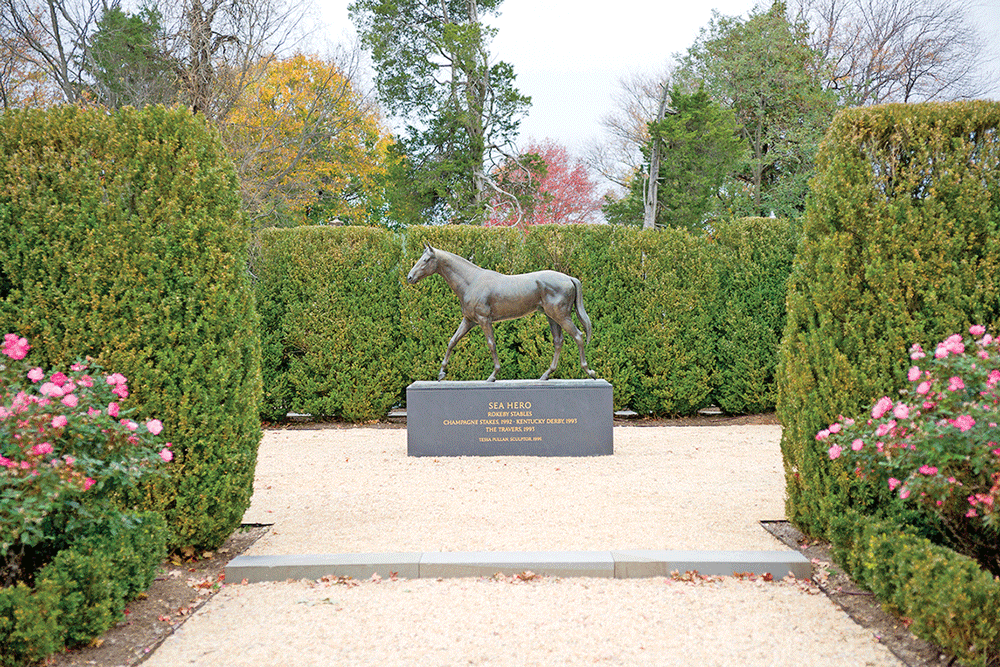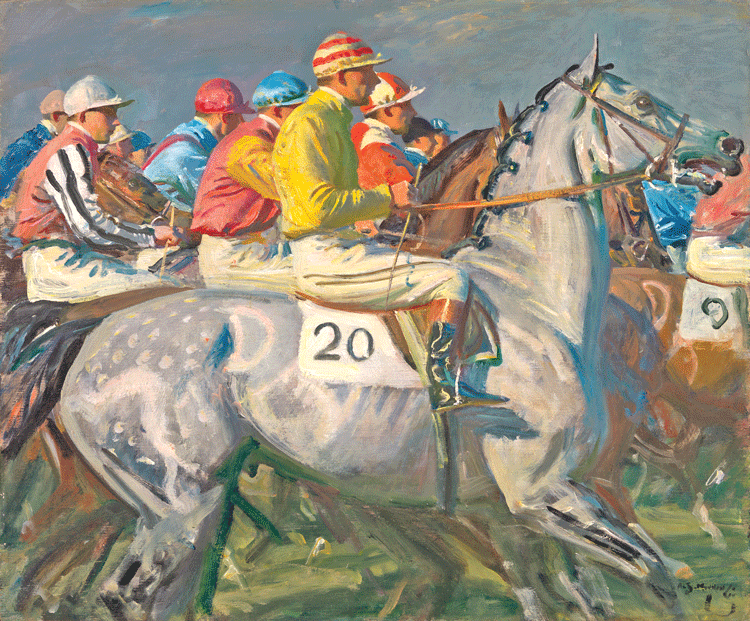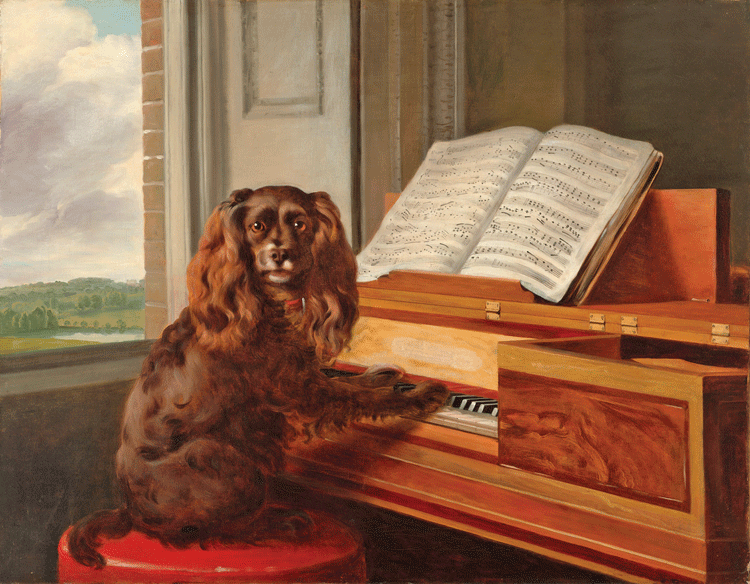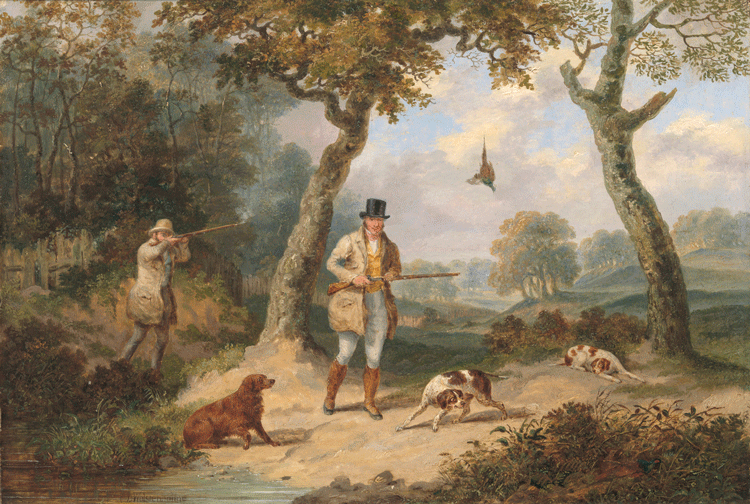A Sporting Vision: An Exhibition At the NSLM

The Paul Mellon Collection of British Sporting Art from the Virginia Museum of Fine Arts.
By Richard Hooper
Paul Mellon’s influence in Middleburg, as elsewhere, is significant and lasting. When Mellon moved into Brick House on his estate outside of Upperville in 1941, it became a base for his sporting, collecting and philanthropic interests—all of which overlapped.

In the coming years, he would underwrite the construction of Trinity Church in Upperville, build the Middleburg Training Center, and purchase more than a thousand acres of land near Paris, Virginia, which he would give to the state as Sky Meadows Park.
Along with a million-dollar donation toward the construction of the new buildings for the National Sporting Library & Museum, he donated books and works of art. Among these are a bronze statue of his horse Sea Hero (winner of the Champagne Stakes, Kentucky Derby and the Travers) and another bronze depicting a Civil War horse, a memorial to the 1.5 million horses and mules that were casualties. The NSLM also has the collection of weathervanes formed by Mellon, one of which adorns the cupola of the library building itself.
We are reminded again of this tremendous impact with “A Sporting Vision: The Paul Mellon Collection of British Sporting Art from the Virginia Museum of Fine Arts” on exhibit at the National Sporting Library & Museum from April 13 through July 22.
The 84 paintings on exhibit were a gift from Mellon to the Virginia Museum of Fine Arts. They currently form a traveling show, of which Middleburg is the first stop, followed by the Musée de la Chasse et de la Nature in Paris. The collection will then return to the United States for exhibitions at the Frist Center for the Visual Arts (Tennessee) and The Frick Art & Historical Center (Pennsylvania). The tour will end in September 2019, after which the paintings will return to the Virginia Museum of Fine Arts to go on permanent display in their refurbished galleries.

(English, 1878-1959)
Linin’ ‘em Up, Newmarket, ca. 1940-53
oil on panel
19 3/4 × 23 1/2 inches
Virginia Museum of Fine Arts, Richmond.
The Paul Mellon Collection
Beginning with six magnificent paintings by George Stubbs, the exhibit is divided into five categories. Four of the Stubbs paintings are equestrian scenes, one is of a recumbent tiger, and the last is of a black and white spaniel.
“In Pursuit” depicts foxhunting, shooting and angling, with angling represented by Henry Thomas Alken. In four small paintings by Dean Wolstenholme the Younger, shooting is portrayed in each of the seasons. There is also a painting of shooting by Benjamin Marshall. The emphasis, though, is foxhunting, a pursuit in which Mr. Mellon was passionately engaged for more than 50 years, both here and abroad. Chronologically, it begins with “A Meet of Foxhounds” painted by James Ross in 1732. Some of the other canvases with hunting scenes are by John Nost Sartorius, James Seymour, John Frederick Herring Sr. and the naïve painter John Cordrey.

Also exhibited in “In Pursuit” is “The Melton Hunt Going to Draw the Ram’s Head Cover,” a large painting by Sir Francis Grant containing 37 portraits spread across its breadth. Grant, aside from a few lessons from John Ferneley Sr., taught himself to paint by copying old masters. After significantly depleting his abundant inheritance on collecting paintings and chasing the fox, Grant began painting professionally, becoming one of the most sought after portrait painters of Victorian high society and royalty, including several of Queen Victoria. His portraits frequently depicted his subjects engaged in equestrian activities. Grant was only one of two sporting artists to become President of the Royal Academy. The other, Sir Alfred Munnings, is represented in the exhibition with three paintings.
The paintings exhibited in the category “In Motion” show the English racing scene from 1715 with John Wootton through Sir Alfred Munnings in the mid-20th century. It also displays paintings by Peter Tillemans, James Seymour, and John Frederick Herring Sr. This section is also devoted to scenes of coaching and carriage horses. Paintings by James Pollard represent both coaching and racing with additional carriage related paintings by Charles Cooper Henderson, Richard Barrett Davis and others.
Rural life, horses, hounds, exotic animals, pigs and other creatures make up the category “Animal, Man, Country.” Among these paintings, we are shown the gentle activity “A Game of Skittles,” painted by the French artist Pieter Angellis and “Two Durham Oxen” by the painter of prized livestock, Thomas Weaver. There is a family portrait by Herring Sr., painted in 1842, of Thomas Dawson, his wife and their three children, one of whom sits upon his pony, and the pet greyhound. Dawson, an innovative racehorse trainer, is not portrayed working with horses but with his family. It is a lovely painting, representing an emerging middle class.

“The World Upside Down” is the concluding section of the exhibition. It is made up of the delightfully satirical painting, “The Rising Woman and the Falling Man,” by John Collet, a most entertaining scene by Philip Reinagle of a spaniel playing a piano and a series of 10 paintings by John Ferneley Sr., showing the hunting exploits of Count Sandor in Leicestershire in 1829. The Count takes a large number of falls, including two spills into drainage ditches. Perhaps Mr. Mellon felt a certain sympathy for the Count. As he recounted a hunting experience in England in 1970 in his autobiography, “Reflections In A Silver Spoon,” Mellon stated that, “I had the misfortune more than once to fall into deep, water-filled ditches, earning for myself the nickname ‘Water Mellon.’”
There will be a members-only opening reception for this exhibition on the evening of April 13. If you are not a member, there could not be a better time to join and, in the spirit of Paul Mellon and others, support this world-class resource and treasure of our region. ML


